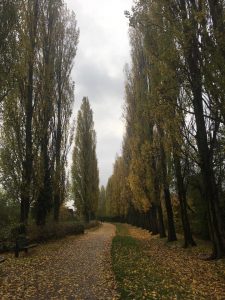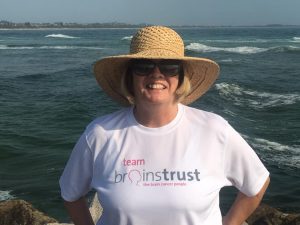Week two of Margaret’s Run, Row, Ride diary.
We’re so inspired reading Margaret’s progress in her Run Row Ride challenge – taking it abroad to Australia! Catch up with her amazing progress here. If you missed last week’s entry, you can find it here.
Day Seven of my Run, Row, Ride Challenge for brainstrust
“I cannot believe it has now been a week since I started this challenge!
This morning was another early run, not such a good day weatherwise. Heavy overnight rain meant there were some giant puddles along the pathways. Shame I didn’t have my wellies on, pretend to be a kid and do some puddle jumping!
I’m loving my challenge, loving the likes and messages of support and loving the changes this challenge has made to me in just a week.
Friends and family have been generous in their sponsorship and I have already raised 61% of my target.
I have already taken a minute off my time ( the bar was set very low to start off with) but I have a terrific sense of achievement. Seven days ago I would have thought this was impossible. You never know what you are capable of until you try!
Sleep well guys!
Love and strength to you all and thank you for the support. M x
Day Eight. Run, Row Ride.
A conscious decision not to do a formal run this morning as I have a busy day ahead and need to conserve some energy. We fly to Australia this evening at 9.15pm!
 However the walk from the drop off point at Gatwick South to check in and then through security to the lounge must have counted. The moving walkway was not working and my husband was pushing the trolley at a cracking pace . We had booked special assistance but will only use it from the lounge to the gate.
However the walk from the drop off point at Gatwick South to check in and then through security to the lounge must have counted. The moving walkway was not working and my husband was pushing the trolley at a cracking pace . We had booked special assistance but will only use it from the lounge to the gate.
It seems strange having special assistance at the airport when I am doing a running challenge but it is the noise and hustle and bustle that I struggle with. In the lounge they decided to test the announcement system. Talk about loud!!!
My trainers are packed, my fabulous brainstrust T shirt arrived (I love it-photos will follow) just in time and is in my suitcase. The rest of my runs will be from various places in New South Wales. I have a mother in law (92) and a daughter, son in law and two grandsons in Newcastle NSW.
As Jaime said, how many circuits of an A350 make a Mile!!! Not sure map my walk works at 35, 000 feet!!
Have a fabulous Friday everyone!
Love M xx
Day 9 ?????
I have no idea what day it is here transiting at Taipei airport.
However after a great sleep on the first leg of our journey I was raring to go. The longest, flattest and quietest airport terminal.
Power walked one end to the other. My husband Bob was my pacemaker (he was too embarrassed to let me run!) we easily did 2km.
Happy to be on target and ready to sleep 💤 on the next leg to Sydney!
Love and hugs to all all!
Margaret x
Run, Row, Ride
I’ve not had internet access for a few days but I have still been running in the sunshine.
My pace has increased, my energy levels have increased and I’m feeling pretty good having put my recent set back in a box in my head and firmly closed the lid for the next four weeks.
Be prepared for posts of sunshine and beautiful beaches!






